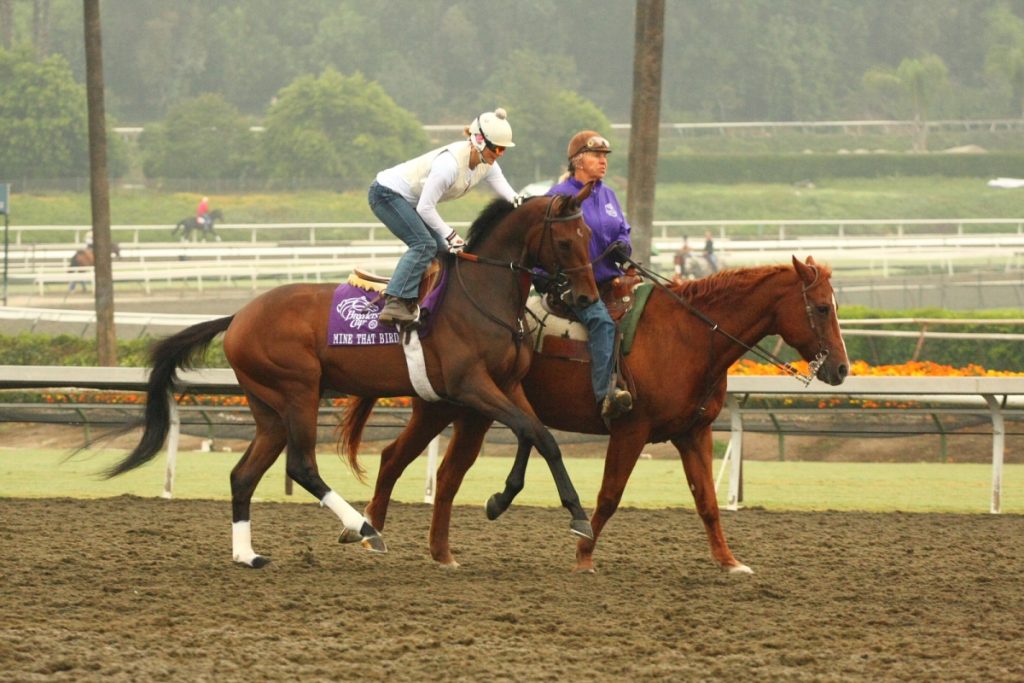Happy Belated Birthday, Australian Horses!

On May 2, 2009, a horse named “Mine That Bird” shocked the racing world by taking first place at the Kentucky Derby. At 50-to-1 opening odds, few gave her a chance to win; those who placed a $2 bet ultimately yielded $103.20. Her emergence from the pack was even missed by the TV commentators calling the race. Mine That Bird’s win was, by all measures, a huge upset.
And in some sense, it should have never happened. Mine That Bird was foaled — that is, born — on May 10, 2006. The Derby is a race for thoroughbreds who are three years old. And even if you struggle with arithmetic, you’ll immediately see the issue. Mine That Bird’s third birthday wasn’t until eight days after the Derby.
But don’t worry — Mine That Bird and her team weren’t cheating. It turns out, Mine That Bird celebrated her third birthday months before the Derby. In fact, all of the Derby horses did. In fact, they all have the same birthday, as far as race organizers are concerned.
This quirk of calendering dates back almost two centuries ago, when thoroughbred horseracing realized that the marquee horse racing events happened to roughly coincide with when the horses were actually born — but only roughly. Horse gestational periods are 11 to 12 months, but horses aren’t in heat year-round; by and large, if you’re looking to breed horses, spring and summer months are the most effective window for doing so. Competitive horse racing starts in the fall and extends into the late spring, so there’s a good chance that a competitive horse will age out during the race season. (You could imagine a ridiculous situation where a three-year-old wins the Kentucky Derby, turns four, and then can’t run in the other two legs of horseracing’s Triple Crown.)
That changed in the early 1830s. English race organizers, seeing the issue, decided to institute a universal birthday for horses, setting it at May 1. All horses born before May 1st were grouped together; all horses born on or after that day were in a separate age group. (It’s not all that different from how school systems implement grade cutoffs for human kids, but for a horse, it’s a bigger deal — their real birthdays don’t really matter much, as they’re not bringing cupcakes to class or anything like that.) May 1st, though, was a terrible choice for a cutoff, so in 1834, England shifted the date to January 1. Throughout the Northern Hemisphere, that is now the universal cutoff. But for the half of the world in the Southern Hemisphere, that makes no sense, so — as the title above suggests — Australia, New Zealand, and others have adopted an August 1 universal thoroughbred horse birthday.
As a result, breeders are very careful about when they let their prized horses get pregnant. As HowStuffWorks notes, “horse buyers tend to shy away from horses born late in the year, which in turn means that horse breeders do everything they can to ensure their foals are born in the first half of the year [if born north of the Equator]. This has led to interventions like drugs and the use of artificial light to keep the reins tight over thoroughbred reproduction.”
Bonus fact: The United States was among the last nations to adopt the January 1 horse birthday, and while it likely would have happened anyway, the question ultimately became settled as a result of the Civil War. Horse Racing sense explains: “In the United States [in the early 1850s], May 1 was the accepted birthday for all horses. This tradition continued until 1858, and then states began to split. Southern states continue following the old rule, and northern states the [new] rule of January 1. This split continued through the Civil War; the South aged their horses based on a May 1 birth, and the North used January 1. As the saying goes, the winner makes the rules, so after the North’s victory, all horses were deemed born on January 1.”
From the Archives: Born to Ride: The winning jockey who never saw his victory.
